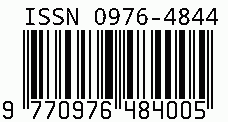
International Journal of Technology and Applied Science
E-ISSN: 2230-9004
•
Impact Factor: 10.31
A Widely Indexed Open Access Peer Reviewed Multidisciplinary Bi-monthly Scholarly International Journal
Plagiarism is checked by the leading plagiarism checker
Call for Paper
Volume 16 Issue 11
November 2025
Indexing Partners



















Seasonal Dynamics in Gold Price Forecasting: A Comparative Analysis of ARIMA and SARIMA Models for Retail Gold Prices - Evidence from daily data, 2014–2025
| Author(s) | Rajib Bhattacharya |
|---|---|
| Country | India |
| Abstract | The study investigates the predictive dynamics of retail gold prices in India by comparing the forecasting efficiency of two classical time-series models—Auto-Regressive Integrated Moving Average (ARIMA) and Seasonal Auto-Regressive Integrated Moving Average (SARIMA)—using daily gold price data from 2014 to 2025. Gold, being both an economic and cultural asset in India, exhibits pronounced seasonal fluctuations driven by festive demand, investment cycles, and macroeconomic conditions. Recognizing the inadequacy of linear ARIMA models in accounting for such periodic patterns, the research introduces SARIMA as a seasonality-augmented alternative to test whether the inclusion of seasonal autoregressive and moving-average terms significantly enhances predictive performance. The methodology follows the Box–Jenkins framework for model identification, estimation, and validation, employing statistical diagnostics such as the Augmented Dickey–Fuller (ADF) and KPSS tests for stationarity and the Ljung–Box Q-statistic for residual independence. Forecast accuracy is assessed using Mean Absolute Percentage Error (MAPE), Root Mean Squared Error (RMSE), and the Diebold–Mariano (DM) test for comparative predictive evaluation. Empirical findings reveal that while both models provide statistically acceptable forecasts, the SARIMA model consistently outperforms ARIMA across all error metrics, achieving a 6% improvement in MAPE (4.58% versus 4.89%). The results substantiate that seasonal differentiation improves model adaptability to cyclical movements inherent in gold prices, reflecting recurring variations linked to cultural and market dynamics. Furthermore, the study highlights that ignoring seasonality leads to cumulative bias and underprediction, particularly during upward market trends. The findings emphasize that incorporating seasonal structures transforms traditional linear models into more context-sensitive predictive systems, providing greater reliability for market participants and policymakers. By reinforcing the empirical and methodological relevance of SARIMA in seasonal financial time-series forecasting, this study contributes to both econometric modelling literature and applied financial analytics. It underscores the importance of seasonality-aware frameworks in enhancing predictive precision for volatile assets, particularly in emerging markets like India, where demand cycles strongly influence retail gold pricing. |
| Keywords | Gold Price Forecasting, ARIMA, SARIMA, Seasonality, Time-Series Modelling JEL Classification: C22, C53, E37, G11, Q02 |
| Published In | Volume 16, Issue 10, Array 2025 |
| Published On | 2025-10-31 |
| Cite This | Seasonal Dynamics in Gold Price Forecasting: A Comparative Analysis of ARIMA and SARIMA Models for Retail Gold Prices - Evidence from daily data, 2014–2025 - Rajib Bhattacharya - IJTAS Volume 16, Issue 10, Array 2025. DOI 10.71097/IJTAS.v16.i10.1127 |
| DOI | https://doi.org/10.71097/IJTAS.v16.i10.1127 |
| Short DOI | https://doi.org/g98nbq |
Share this


CrossRef DOI is assigned to each research paper published in our journal.
IJTAS DOI prefix is
10.71097/IJTAS
Downloads
All research papers published on this website are licensed under Creative Commons Attribution-ShareAlike 4.0 International License, and all rights belong to their respective authors/researchers.

